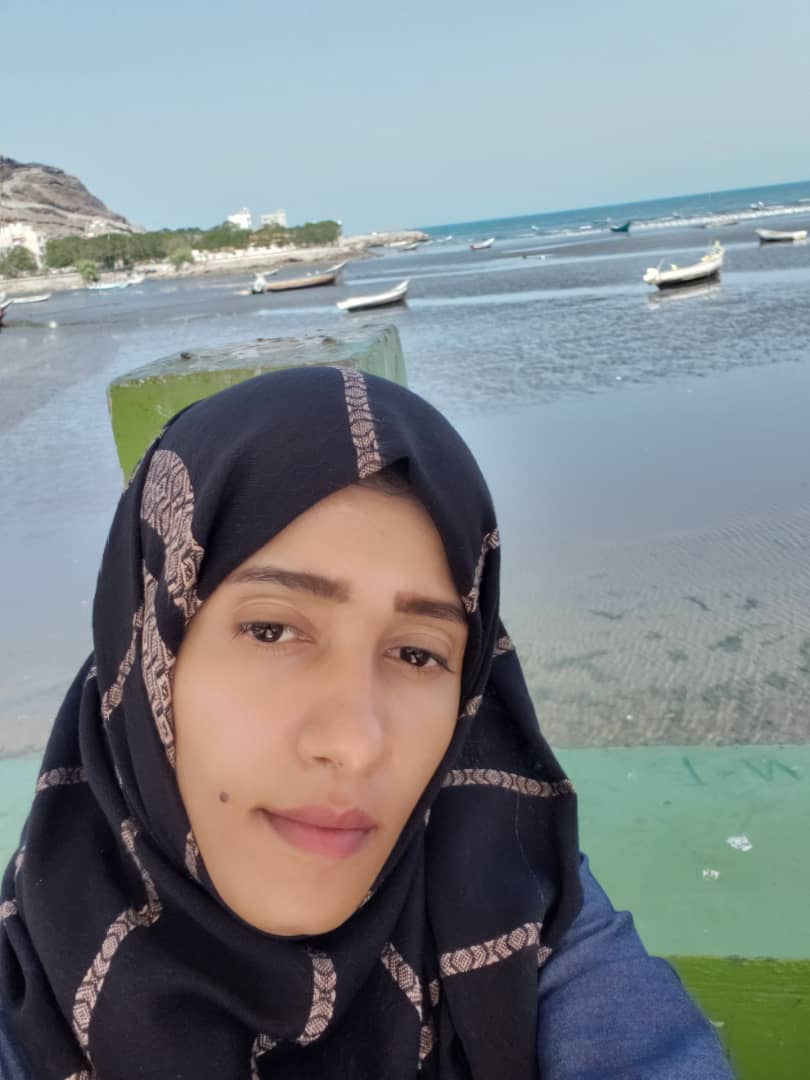Bringing together environmental and health journalism in the Middle East and North Africa region
by Kathryn Cleary
Sahar Mohamed is the new Media Project Assistant for Internews based in Yemen. Mohamed joins Internews full-time after working as a climate change reporter and science teacher in the MENA region. In a virtual interview with the Health Journalism Network team, Mohamed shares more about her background, and inspiring journey in the science communication sector.
Mohamed’s interest in science and passion for the environment first led her to teaching. At the time, she was unable to study science because of the ongoing socio-political conflict in Yemen. For five years, Mohamed taught science to primary and secondary school learners in Yemen. The most rewarding part of this work, she says, was seeing the children respond positively to the different things they were being taught. “Watching their faces change, to start questioning and inquiring during the teaching process,” she says.

Along with socio-political conflict, Yemen also faces severe environmental issues like water scarcity as well as the growing impacts of climate change, which Mohamed experienced first-hand. Acting on her passion and observations, Mohamed began working for the Yemen Science Network in 2018. “I started by translating scientific reports from magazines like Science Alert [as well as] writing reports on scientific topics [relating to] climate change and renewable energy,” she says.
Taking notice of her excellent work at the Yemen Science Network, Climate Tracker, an international organisation working to better support and improve climate journalism globally, approached Mohamed to partake in their MENA environmental journalism fellowship. The fellowship started at the beginning of 2019 and lasted for one year, she says.
Since starting her writing journey, Mohamed has produced 15 pieces, some of them in partnership with another fellow from Egypt. “We [were] aiming to cover climate issues in the region, for example, water security, oil, fossil fuels, pollution, the importance of renewable energy, that was our main interest.”
Last year, after the fellowship with Climate Tracker, Mohamed trained with the Humanitarian Journalism Foundation to learn more about reporting on the intersections between humanitarian and environmental issues in her country. She also received two grants from the International Centre for Journalists (ICFJ) to report on COVID-19. With these grants, Mohamed produced a multimedia investigative report looking at how international funding was being used in Yemen to combat COVID-19, and more specifically, how this funding failed to reach vulnerable refugees and displaced persons.
“I hope I [can] be able to help Internews’ Yemen team to implement programs effectively, moreover I look forward to helping to extend the work and activities of the HJN and EJN networks in the MENA region,” says Mohamed.
As part of her day-to-day work, she also works to search for and network with possible new partners and HJN members within the MENA region.
While Mohamed’s first love may be for environmental journalism, she says that health and environmental journalism are directly related. “Human health [is] affected directly by the environment and any change or abnormal variables in the environment will have [an] effect on humans and their health. Coronavirus and climate change-related fevers and diseases are the best examples,” she says.
Mohamed’s statement aligns with the Earth Journalism Network’s recent launch of a free online course on reporting on zoonotic diseases, which brings together both environmental and health journalism. To access this course titled “From Animals to Humans: How to Report on Zoonotic Diseases and Their Environmental Origins,” click here.
Wanting to connect more with Mohamed as well as other HJN members in the MENA region? Send us an email at [email protected]!